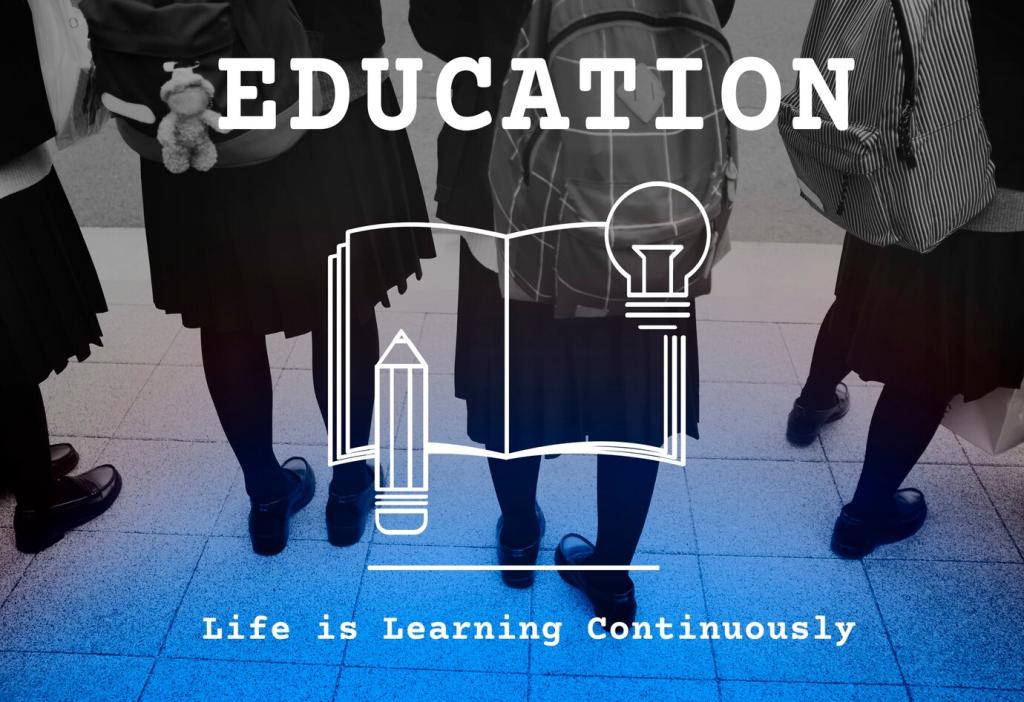
Chosen Theme: The Evolution of e-Tutoring Platforms
Welcome to our special home page edition dedicated to the Evolution of e-Tutoring Platforms. From humble message boards to AI-enhanced mentors, we follow the breakthroughs, missteps, and human moments that shaped modern online tutoring. Read on, join the conversation, and subscribe for future deep dives.
Early e-tutoring lived in email chains, bulletin boards, and threaded forums where patience outweighed polish. Mentors answered at midnight, attachments traveled slowly, and learners discovered that thoughtful written feedback could be as powerful as a lecture hall’s booming voice.
A Brief Timeline of The Evolution of e-Tutoring Platforms
Synchronous Spark Meets Asynchronous Depth
Live sessions spark motivation, while asynchronous activities create space for practice and revision. The best e-tutoring blends both, using quick live check-ins, targeted videos, and reflective prompts so learners consolidate insights rather than watch them evaporate after a single session.
Adaptive Pathways and Mastery Pacing
Adaptive platforms recalibrate difficulty based on performance and confidence. Mastery pacing respects varied starting points, letting learners revisit fundamentals or leap ahead. Tutors use data signals as conversation starters, not verdicts, keeping human judgment at the heart of personalization.
Assessment as Ongoing Conversation
Instant quizzes, rubric-guided feedback, and audio comments turned assessment into a continuous, supportive loop. Instead of fearing grades, learners engage with iterative checkpoints. Tutors coach metacognition, helping students analyze mistakes, plan strategies, and celebrate incremental progress that compiles into mastery.

Human Stories from The Evolution of e-Tutoring Platforms
Studying after hospital shifts, Jaya struggled with integrals until a tutor’s annotated video paused precisely where confusion peaked. Replay by replay, ideas clicked. She messaged, “I finally hear the logic.” That moment, recorded and rewatchable, turned exhaustion into momentum and confidence.
Technology Milestones in The Evolution of e-Tutoring Platforms
Milliseconds matter. Low-latency video preserves conversational flow, while shared canvases turn ideas into collaborative sketches. Layer controls, version history, and pen pressure support reduce confusion. Suddenly, explanations are not spoken at students but constructed with them in real time.

Access, Equity, and Inclusion in The Evolution of e-Tutoring Platforms
Designing for Screen Readers and Neurodiversity
Clear headings, alt text, keyboard navigation, captions, and adjustable contrast empower more learners. Flexible layouts reduce cognitive overload. When platforms adapt to diverse processing styles, students focus on understanding, not fighting the interface, unlocking energy for curiosity and deeper practice.
Resilience for Low-Bandwidth Realities
Offline modes, compressed video, and audio-first options keep learning moving when connections fail. Downloadable notes and light whiteboards bridge unstable networks. Equity means preparing for imperfect conditions so learners can show up fully, regardless of signal strength or device constraints.
Language Bridges and Cultural Context
Multilingual interfaces, glossary overlays, and localized examples honor identity. Tutors trained in cultural responsiveness reduce misinterpretation and build trust. When examples reflect lived realities, understanding accelerates, and learners feel seen rather than translated, fostering stronger participation and enduring confidence.
Trust, Privacy, and Integrity Across The Evolution of e-Tutoring Platforms
Collect only what helps learning, explain why, and offer meaningful choices. Retention limits, encrypted storage, and transparent settings create confidence. Privacy becomes a daily practice, not a paragraph buried in terms that nobody reads until something goes wrong.
Integrity thrives when expectations are clear, assessments are authentic, and support is timely. Humane proctoring, open-book design where appropriate, and reflective prompts reduce cheating incentives. Trust is built through relationships, not surveillance, allowing learners to grow without constant suspicion.
Explain how recommendations are made, allow appeals, and invite human oversight. Publish bias audits and offer control toggles. When learners and tutors can question the system, the platform becomes a partner in judgment rather than an unchallengeable black box.




